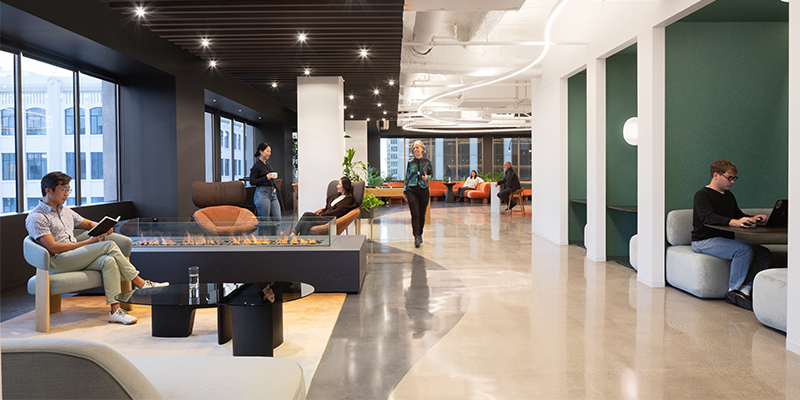Supply chain disruption over the past few years has been the mother of innovation across a host of freight carrier modes as well as the industries they serve. Panelists traded ideas about supply chain disruption and innovation and provided a look into the pain points they faced and solutions they’ve found at CRE.Converge 2022 this week.
At the outset of the COVID-19 pandemic, the shutdowns across China – and the uncertainty over their duration – were particularly painful, said Jennifer McNeill, vice president, True Value Company. “To compensate, we had to double-down on visibility,” she said. “We needed to know where things were. We had much more in-depth conversations with suppliers.”
As the pandemic went on, True Value changed how it routed freight, moving items by rail or on the road from places the company hadn’t before, and opened up new facilities, McNeill said. And as a seasonal retailer, the company has continued to add lead time to ensure inventory arrives within the right window. “We’re buying earlier,” she said, noting that someone shopping for lawn furniture in the spring will probably go elsewhere if True Value doesn’t have it. “You’re probably not going to come back in August.”
True Value has taken a hard look at the stability of labor markets in deciding where to source products, McNeill said, adding that the company also has leaned into becoming more agile. “The key for us is having visibility to data, doubling-down on supply chain visibility, and having the ability to be flexible and act.”
BNSF Railway lost 25% of its volume overnight when the pandemic hit. After that rapid constriction, however, volume and flow returned to normal within two-and-a-half months, and the company has been playing catchup ever since, especially from a labor perspective, said Cary Hutchings, director of corporate real estate for the company. “We were trying to find short- and mid-term solutions,” he said. “We took tracks out of service so we could use them to stack containers. That’s how congested we were.”
Since then, BNSF has shifted their emphasis to inland ports and other new markets and service lanes, Hutchings said. “We’re looking at where people want to live, embracing an inland ports strategy and expanding into inland waterways.”
While onshoring of production could be one solution to supply chain tangles, Hutchings noted that unless all the components in a given product are made in the U.S., it might not help. “If the end product [needs] one particular component that you can’t get, it doesn’t matter,” he said, while also acknowledging that, “You definitely can have some efficiencies from onshoring or re-shoring.”
Air freight faced an unexpected boom when the pandemic first hit, with a 50% uptick in volume for which carriers were initially unprepared, said Edip Pektas, founder of Airbox. “We had to scale up very fast,” he said. “In the six months after March 2020, I rented 300,000 square feet of space to handle all the goods coming into the country.”
Since then, Pektas said, activity has slowed, demand for facility space and congestion time have eased – and air freight rates have settled to pre-COVID levels. To keep air freight moving efficiently, companies are turning rapidly to digitalization of the supply chain. “It allows us to be more visible to the next [link in the] chain,” Pektas said.
Chris Pickett, chief strategy officer at Flock Freight, gave the trucking perspective on the developments of the past few years. Companies that have adapted to changing circumstances have fared the best during the massive disruptions, he said. “[The pandemic] created a tremendous need for speed,” Pickett said. “That resonated across every industry vertical.”
While automated vehicles will become the norm in the trucking industry at some point, Pickett predicted that’s at least five to 10 years out. “Until you take the safety driver out of the vehicle, the economics don’t make sense,” he said. Eventually, the technology will improve to where driverless vehicles are safe and practical.
For companies to become agile in navigating the supply chain – a priority that McNeill emphasized – digitalization is almost a requirement, Pickett said. “That requires good data that you can use to make a decision,” he said, adding that getting that data requires investment, and part of that investment must be allocated to defending against cyberattacks. “Those can have a tremendously debilitating effect on the movement of goods.”
Moving forward, Pickett expects that the “just-in-case” mentality that prevailed during the height of the pandemic, when retailers and suppliers were overstocking goods, will give way to the typical “just-in-time” mindset of the past few decades. “There’s not much incentive to invest in redundancy… as the tide goes out and demand slows down,” he said.

This post is brought to you by JLL, the social media and conference blog sponsor of NAIOP’s CRE.Converge 2022. Learn more about JLL at www.us.jll.com or www.jll.ca.








